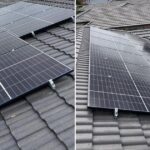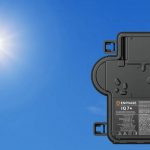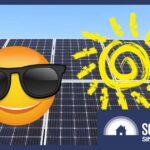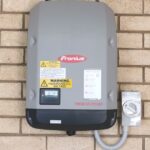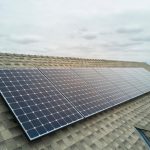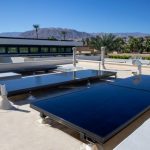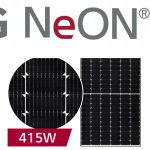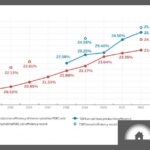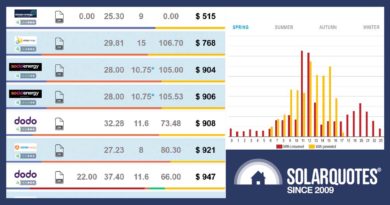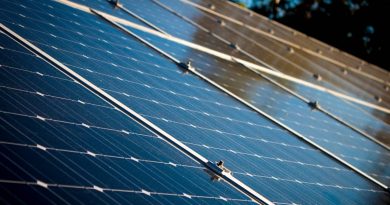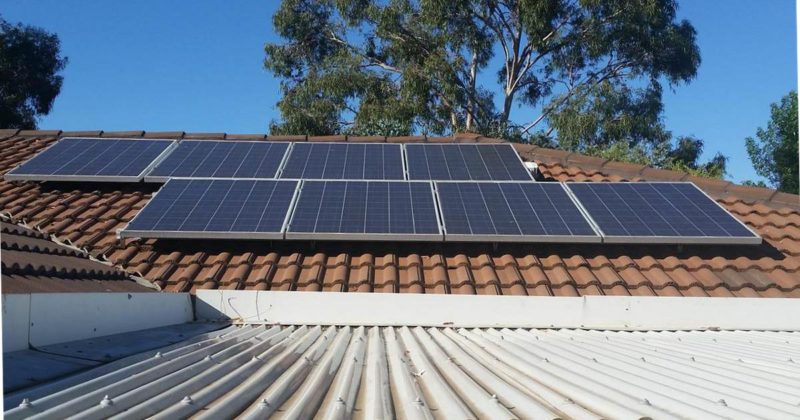Solar Panels Vs. Summer Scorcher
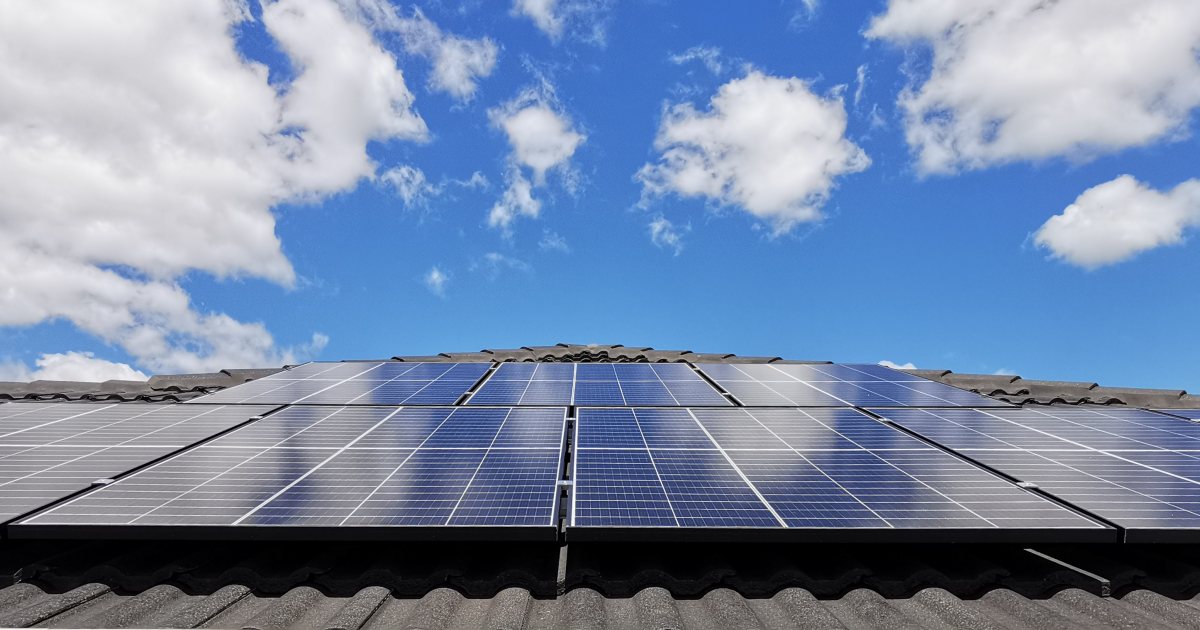
Things got pretty toasty here in Adelaide on Tuesday. Discover the impact it had on our solar power system’s performance.
Our system is comprised of just under 10kW of solar panels (9.96kW), an 8.2kW inverter and is export limited to 5kW. As it’s reasonably new, I’ve been keeping fairly close tabs on what it’s doing. And as heat is the enemy of solar panel efficiency, I was particularly interested in what would happen on very hot day.
I recently wrote about how the system performed on Xmas day when we were graced with the presence of 19 guests requiring cooling by our aging air-conditioner. It was what most would consider a hot day at 34 degrees, but mild compared to what was to come over the next couple of days.
Monday At 37.4°C
At around 2.20 pm on Monday, the temperature outside had reached 37.4°C. Armed with my trusty ladder and an infrared thermometer, I took a reading of the solar panels, which were sitting at around 55.2°C. As panels will often be 20°C above ambient, this was a little on the “cool” side – probably helped by a bit of breeze.
Solar panel wattage ratings are based on a Standard Testing Condition (STC) of 25°C module temperature (not ambient). Above that and they start to lose efficiency1. How much they lose varies from model to model, but more on that in a bit.
At that point, the inverter was cranking 8.185 kW; so just a smidge under its maximum capacity of 8.2 kW.
Nice!
Tuesday At 41°C
Tuesday was hotter. At around 2 pm, the temperature had reached 41°C. Back on the ladder and another temperature reading: 62.1°C this time around.
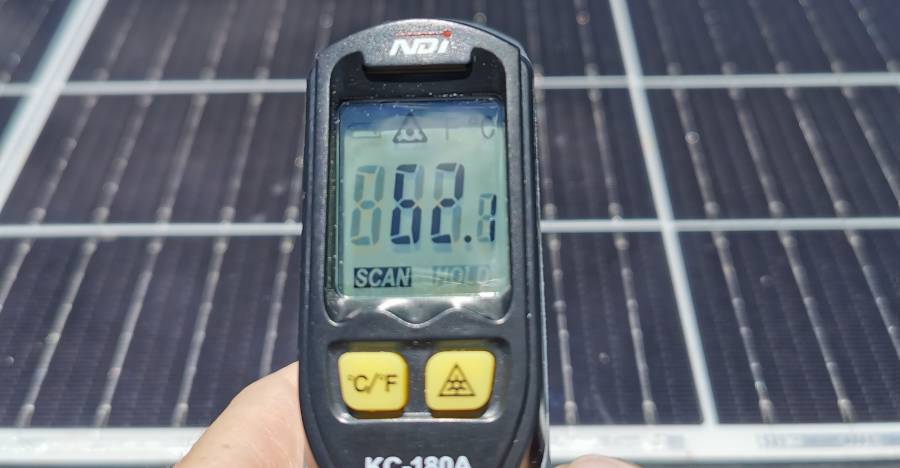
We have Trina solar panels – the Vertex S+. Trina states the Vertex S+ have a temperature coefficient of Pmax of -0.30%/°C. This means for each degree above 25°C, the panels lose -0.30% of their rated capacity. And the difference in this case was 37.1 degrees above 25°C.
So: 37.1 x .3 = 11.13% expected capacity loss (~1.1kW) = ~8.85kW capacity after loss.
Bearing in mind I have an 8.2 kW inverter, meaning that is the maximum it will output, I’ll need to take Trina at its word on this. With regard to the inverter’s performance, at that point it was ticking along at around 8.12 kW output – again, not much under its maximum capacity.
Choosing An Inverter Installation Location
We have a Fronius inverter – a Primo 8.2-1.
Many inverters use passive (aka “natural” or convection) cooling. One of the great things about the Fronius Primo inverter is it has active cooling – a fan; the speed of which ramps up and down depending on temperature. This feature helps to maintain performance in hot conditions.
One of the not-so-great things about the Fronius Primo is it has a fan, which can be rather noisy. The following video was taken around the time I took panel temperature readings when the inverter was working really hard. I was standing back around 3 metres from the inverter, but zoomed in.
Our inverter is installed in the garage (which seems to amplify the sound) and is around 90 cm away from a door. On the other side of that door and behind the brick wall the inverter is hanging on is our front lounge. While I could hear the fan in the lounge, the sound level wasn’t to the point of distraction (or regret) in my opinion. But it is noticeable and it’s a room we don’t use a great deal – not because of the inverter.
Fronius Gen24 inverters also have a powerful fan; but from what I’ve read they aren’t as loud as the Primo.
By the way, installing a solar inverter (regardless of type) out of direct sunlight is strongly recommended. It may also be required under warranty. Inverters are the workhorse of a solar power system and have a hard enough life without having to contend with the harsh Australian sun beating down on them day-in, day-out. If you don’t have a shady spot, various shade devices and inverter covers are available.
Solar Power In The Heat – No Sweat
This was an interesting exercise and thanks to having an “oversized” system using a good quality inverter, there was very little impact on maximum output compared to ideal conditions.
If your solar power system is appropriately sized, has good components and has been competently installed; don’t be concerned about particularly hot days. In a more detailed article, SQ’s Ronald explains why you shouldn’t worry about heat impact on solar energy output.
Footnotes
- As panels age, they also very slowly lose some efficiency and that’s where “oversizing” a system – where panel capacity exceeds inverter capacity – also comes into play. ↩
Original Source: https://www.solarquotes.com.au/blog/solar-panels-summer-test-mb2771/



